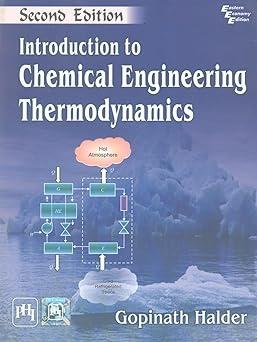The Joule-Thomson coefficient (mu) of a gas can be mathematically represented by (a) (mu=left(frac{partial T}{partial P} ight)_{H})
Question:
The Joule-Thomson coefficient \(\mu\) of a gas can be mathematically represented by
(a) \(\mu=\left(\frac{\partial T}{\partial P}\right)_{H}\)
(b) \(\mu=\left(\frac{\partial V}{\partial P}\right)_{H}\)
(c) \(\mu=\left(\frac{\partial P}{\partial T}\right)_{H}\)
(d) \(\mu=\left(\frac{\partial P}{\partial V}\right)_{H}\).
Fantastic news! We've Found the answer you've been seeking!
Step by Step Answer:
Related Book For 

Question Posted:





